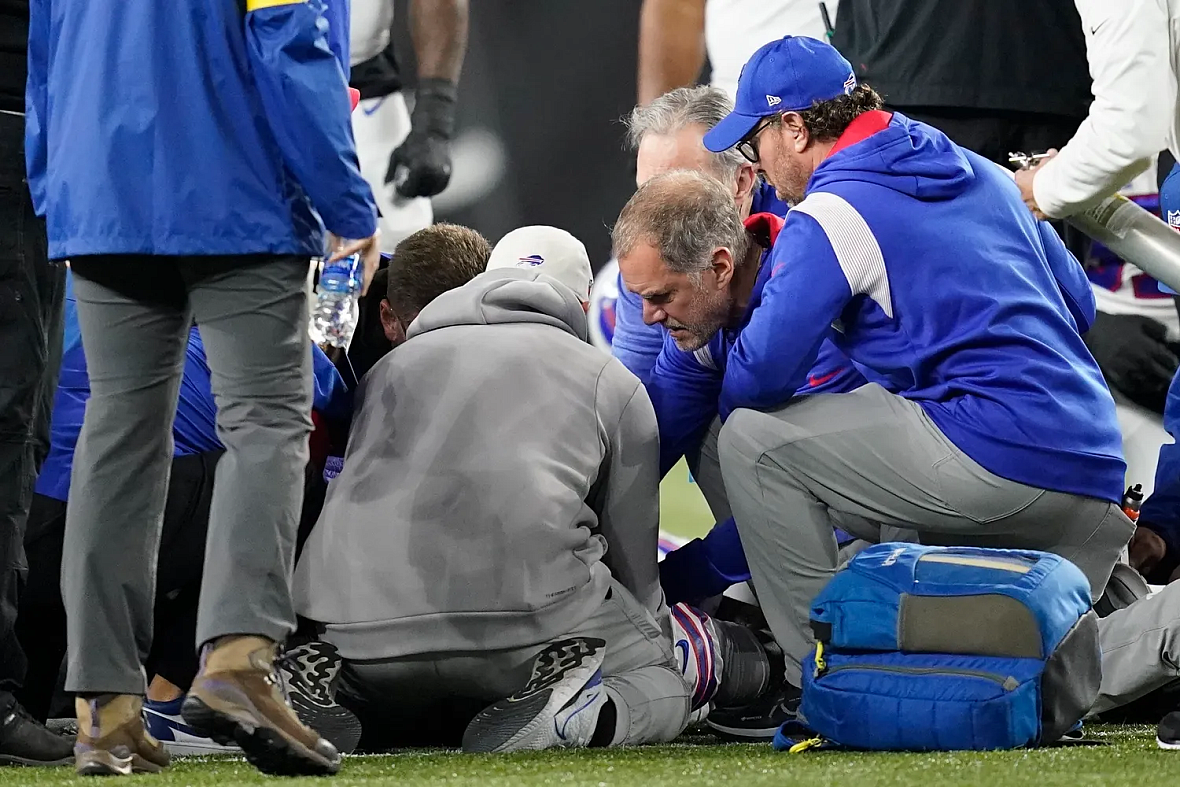Safer Sidelines methodology: How we compiled and crunched the data
The story was originally published in The Courier Journal with support from the USC Annenberg Center for Health Journalism’s 2022 Data Fellowship.

As part of its Safer Sidelines project, The Courier Journal created a database of every sudden death of an athlete in the U.S. The earliest it found was in 1909.
In 2016, reporter Stephanie Kuzydym began tracking details about each collapse ― the sport, the circumstances of the collapse, the location and the cause of death. She manually gathered local news reports, collecting information from social media and obituaries.
In 2023, she teamed up with two researchers who had created databases of their own: retired Oklahoma University athletic trainer Scott Anderson and Dr. Steve Horwitz, the medical director for the Jordan McNair Foundation.
The deaths in the combined database range from both traumatic ― brain injuries, ruptured spleens ― to non-traumatic, such as heat stroke or sudden cardiac arrest.
The criteria included all sports at all levels, and the deaths are any that could have had a chance at being prevented if proper policies, procedures, pre-screenings and personnel were in place, at all levels, but especially high school. That means an athlete collapsing on the field during a practice was included, just like an athlete who came home after practice and died in his sleep ― both from an undetected heart condition.
The database will continue to be updated. If you have information to share, email skuzydym@courier-journal.com.
Venue-specific EAP methodology
In 2009, Kentucky legislators approved a law requiring all coaches to take a sports safety course, which included CPR and first-aid training, following the 2008 heat-related death of Pleasure Ridge Park football player Max Gilpin.
The bill originally called for cold tubs on sidelines, but that was stripped out before it passed.
In 2012, the legislature revised the bill with a measure that called for venue-specific emergency action plans, which are site-specific plans for what to do in an athletic emergency.
The Courier Journal began researching that law, which requires school districts to create, maintain and distribute the plans, among other provisions.
After requesting the venue-specific EAPs from all public high schools in Kentucky, The Courier Journal turned them over to a team at West Virginia University for review. That team was led by Samantha Scareno-Miller, an athletic emergency response plan expert.
Scarneo-Miller and her team developed a checklist using the components of the Kentucky state law, verbatim, to see what needed to be included in each emergency action plan.
The team was made up of five research assistants. They were trained on how to use the checklist to evaluate the emergency action plans by looking for language that specifically identified a component in the EAP, based on the letter of the law. Then an independent researcher audited whether the research team was consistent in their grading.
Then each component’s answer was assigned a number to see how many of the components were fulfilled. There are eight total components of the law, but two of the components could not be evaluated at all – annual review by school principal, as well as all relevant medical staff – because the law requires no documentation of this review. So schools could receive the highest score of a 6, which means their venue-specific EAPs likely meet all of the law, or 0, which means they don’t have a venue-specific EAP.
The team was unable to know whether the EAPs supplied did consist of every single venue for athletics. For instance, when Matthew Mangine Jr. collapsed in June 2020, his athletic trainer had created venue-specific EAPs. However, he had not created one for the practice field where Matthew collapsed.
